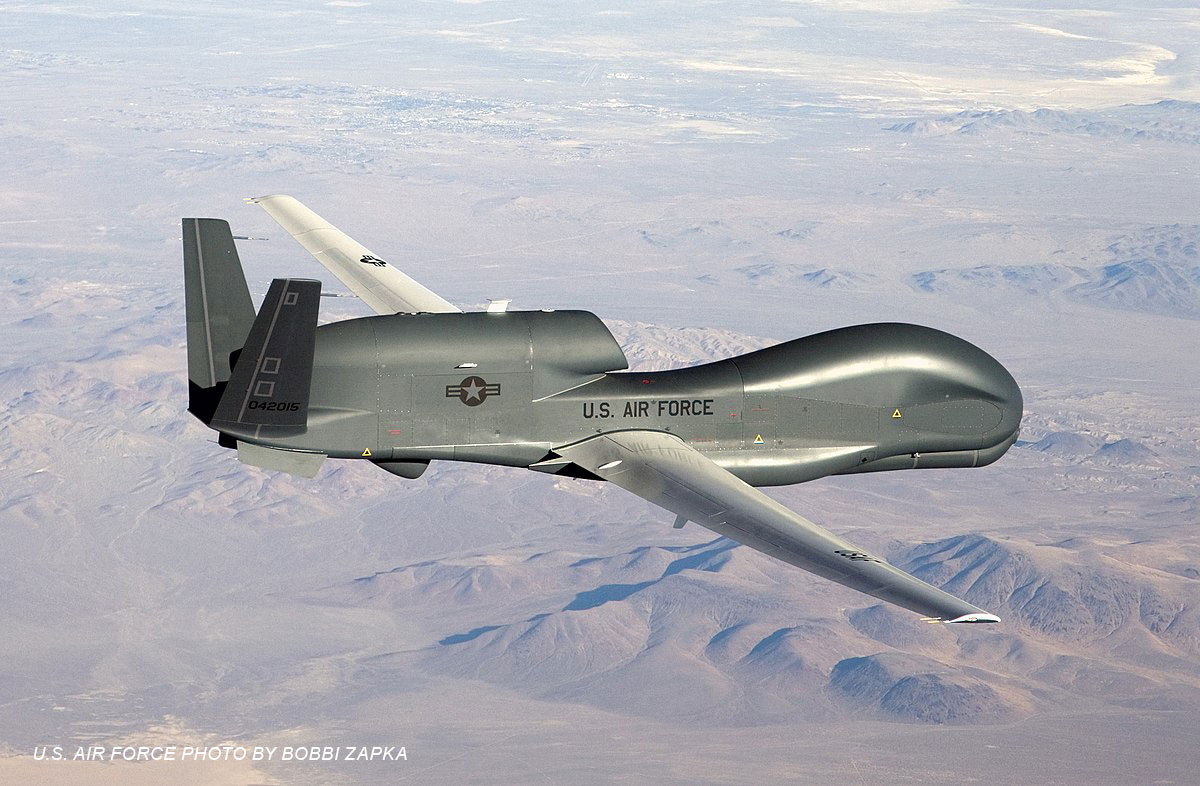National Security, Mission Readiness, and Artificial Intelligence: Why We Founded SGS

The advancement of AI continues to transform organizations and companies across every industry. Its potential is so significant that the US government, not known for its speedy adoption of new technology, has set its sights on the use of AI within its military and defense infrastructure. Just recently, the National Security Commission on Artificial Intelligence (NSCAI) has published a detailed 750+ page Final Report documenting its strategy for “winning the artificial intelligence era.”
Referencing AI’s potential effect on national security, the report raises what Thomas Edison said of electricity, a technology that “holds the secrets which will reorganize the life of the world.” AI has the power to have an even bigger impact on national security — there’s no one singular application or solution that will result from it — AI will fundamentally change the way national security is conducted.
While we’ll be discussing the report and will provide a detailed perspective in a future post, it’s important to bring it up here as its insights and recommendations very much align with our company and mission.
We founded SparkCognition Government Systems (SGS) in order to solve the AI challenges the US government and its allies face. Mission and warfighter readiness is one of the defining factors that must be solved by the US military and leveraging artificial intelligence is, regarding the interest of national security, the key technology needed to address the risks and gaps in our military infrastructure while enabling it to achieve more than it ever has before. This factor stretches across all domains and services and impacts nearly every aspect of the joint force.
We’re excited to introduce you to SGS, share why we’ve founded this company, describe the challenge we’re trying to solve, and show you how and why we have the focus to align and partner with the US Government including the Department of Defense (DoD) and other agencies. Our AI solutions will help the US, its allies, and other national security organizations advance and win the race in this new era of AI technology and warfare.
Mission Readiness Is The Battle, Time Is The Enemy
Amir Husain, my fellow SGS board member, founder and CEO of SparkCognition (our parent company), has extensively discussed the challenge the US military faces in real and hypothetical conflict scenarios. With the adoption of software, AI, and other autonomous technology, winners will be determined on speed and their capability to mobilize their forces.
Mobilizing a military that’s deployed across the globe, is constantly maintaining an aging fleet and infrastructure, and is inundated with millions of data points as it continues to adopt new technology requires nearly insurmountable effort. Yet, the promise of AI is that the USG can harness the power of this data to provide better insights more rapidly to more decision makers — creating a powerful complement of efficiency, speed, and resilience.
Aging Hardware Requires Constant Upkeep
This turns into an issue of operational readiness and warfighter readiness. Frequently, this is due to military services employing legacy systems beyond their planned useful life, and from using similar maintenance schedules, processes, and technologies from when they were first introduced causing unplanned maintenance and supply shortages.
There’s also the human element. Military staff and personnel work across departments and functions, creating tribal knowledge that’s often lost as those personnel age-out or move into different sectors. This knowledge gap can foster inefficiencies and impact how quickly or effectively, for example, a commander can mobilize an older fleet of planes in a time of need. Coupled with the fact that there is a shortage of technically skilled workers who can meet these needs, we’re left with swaths of the military that struggle to maintain necessary mission capable rates. Ultimately, this leads to more cost, more wasted time, and less capability available.
In An Information Battlefield, Optimal Decision Making Is Key
Another challenge our military faces is a result of our increasingly connected world. As more and more software is introduced, cloud-based infrastructure is matured, and wireless communications channels and sensor feeds are set-up, the more awash our military is with data.
This interconnectedness creates more and more data that needs to be processed and analyzed. Without the right technology or analysis, leaders may be overwhelmed by inputs and unable to make decisions confidently or in time — degrading joint readiness and operations across all missions.
As the breadth of information continues to increase, a new risk emerges — not having the right knowledge, the right analysis, or having the right insights to make an effective decision at the necessary time. And because around 80% of data resides in an unstructured format, which is more challenging to process and analyze, most of this data sits unused creating a missed opportunity for insights and more effective decisions.
Why leveraging AI technology is crucial for national security
As compute power, data availability, and common infrastructure deployments accelerate, now is the time to adopt AI technology more broadly and at greater scale. It’s because outcomes dependent on AI actually improve with more data, more inputs, and greater scale.
With AI, the military can increase its output and productivity, reduce over forecasting supply while minimizing the risk of under forecasting, and vastly speed up its decision-making process to reduce the risk that a base or department is forced to scramble at a potentially crucial time.
Through its commercial and private sector adoption, AI has matured to a point where solutions can ingest, analyze, and interpret both structured and unstructured data to enable new insights and facilitate speedier decision-making which solves a key challenge faced by the military. This technology is necessary to serve as the bridge between hardware and software and will be what leads to government, military, and defense success.
The government is moving in this direction. With the designation of the Joint Artificial Intelligence Center (JAIC) as the Department’s [of Defense] AI accelerator, the JAIC is now in a position to begin identifying, investing, and serving as the central hub for the use of AI across multiple departments, sectors, systems, defense applications, and programs.
Ultimately, leveraging AI will create new opportunities that allow for greater efficiency. New tools and technology must be adopted to prescribe and predict asset maintenance, report on unit and fleet health, provide predictive inventory management, automate aspects of personnel management and manpower planning, and provide real-time demand forecasting so unexpected downtime or maintenance is reduced while mission readiness increases.
So what does that mean from a practical application?
As the DoD considers trusted partners to help accelerate AI solutions, we believe SGS has a lot to offer. Solutions exclusively built to solve the critical challenges our military and nation faces yet with the speed, innovation, and creativity borne from commercial experience.
Introducing SparkCognition Government Systems (SGS)
The founding of SGS came from a need we saw that is, in so many ways, validated by what we saw from our leadership and founding team. AI technology companies exist but none with the focus and precision that we provide. While there are AI and tech startups that currently work with the government, many think about the defense and national security market as a vertical inside of a commercial company and, in many cases, treat these challenges as lower priority with fewer dedicated resources assigned to help. The gap is clear.
There is currently no company with commercially successful AI applications in the private market that has launched a purpose-built entity solely focused on government partnerships and has the military background and experience to understand exactly how to work with the defense and military departments of the US government.
Who We Are
SGS is a company founded with years of commercial application of AI technology. We’ve established a board and leadership team with decades of military and national security experience, giving us the ability to advance the mission of providing AI solutions to the national security and defense market. Above all else, we consider ourselves a partner–not just a product or a service vendor–who provides integrated, end-to-end AI solutions devoted to the federal and national security mission.
We build upon commercially viable products which have created significant value for industrial clients like bp and Siemens Energy, and can leverage SparkCognition’s dedicated data science team who have made major strides in the research and application of AI. This provides speed and depth with the balance of data and mission security that a stand-alone company like SGS provides.
This experience, alongside our seasoned leadership team can provide necessary guidance on partnering with the government and effectively adopting and integrating new and emerging technologies within existing government departments and frameworks.
What SGS Does
We’re delivering end-to-end AI solutions that focus on three key focus areas.
Asset Intelligence
We deploy AI across a department’s entire asset ecosystem, incorporating real-time and historical data to predict and model asset performance and provide actionable insights to reduce any asset downtime. This enables operational insights and fosters better situational awareness for planning and predictive maintenance, ensuring greater asset availability and uptime.
Force Multiplier
Because we take in structured and unstructured data, SGS can leverage AI across the entire workforce spectrum that is already multitasking on a cross-functional level. This allows us to provide prescriptive recommendations by function, role, and problem ultimately giving us the ability to capture, retain, and operationalize tribal knowledge, a challenge that, until now, has not been solved.
Decision Optimization
Battles will be won by the military that makes better decisions, faster. With our AI being leveraged across multiple data sources, we can accurately predict demand, solutions, and issues, across the entire department’s hierarchy to enable faster, accurate, and more confident decision-making. This will allow leaders to intelligently and efficiently allocate supplies and resources based on enhanced forecasted demand and inventory management.
This is all possible because we offer an end-to-end solution that spans the value chain from data ingestion, data science, analysis, processing, and solution deployment. Leveraging AI solutions in this way can lead to optimizing aircraft availability by prescribing optimal maintenance for an aging fleet, ensuring no tribal knowledge is lost. It means we can improve demand forecasting for an incredibly complex supply chain, accurately supporting the DoD’s logistics organizations. We can also improve overall safety, productivity, and efficiency to improve ROI across various departments, programs, and future investments.
We are ready to help the country take its military and defense to a level beyond any superpower. It requires integrating AI into all aspects of its departments and supply chain. The age of the arms race is over — it’s an AI race, and we are ready to help the US and its partners win.
Recent Posts

Redefining Contested Logistics: How AI Can Optimize the Navy’s Refueling Operations

America’s Great-Power Opportunity: Author Ali Wyne’s Visit to HyperWerx

AI empowers logistics and readiness for Army 2030

Realizing the impact of AI in autonomous warfare
